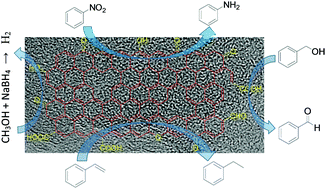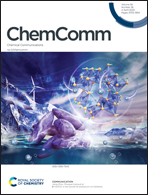A facile strategy based on the metal-free design of carbon to deliver an insight into the active sites for liquid phase carbocatalysis†
Abstract
An effective method to study the active sites for carbocatalysis is proposed based on designing a carbon catalyst in the absence of metal as the growth catalyst. The results suggest that the oxygenated groups on the aromatic carbons are mainly responsible for the catalytic reduction of nitrobenzene and some other reactions.



 Please wait while we load your content...
Please wait while we load your content...